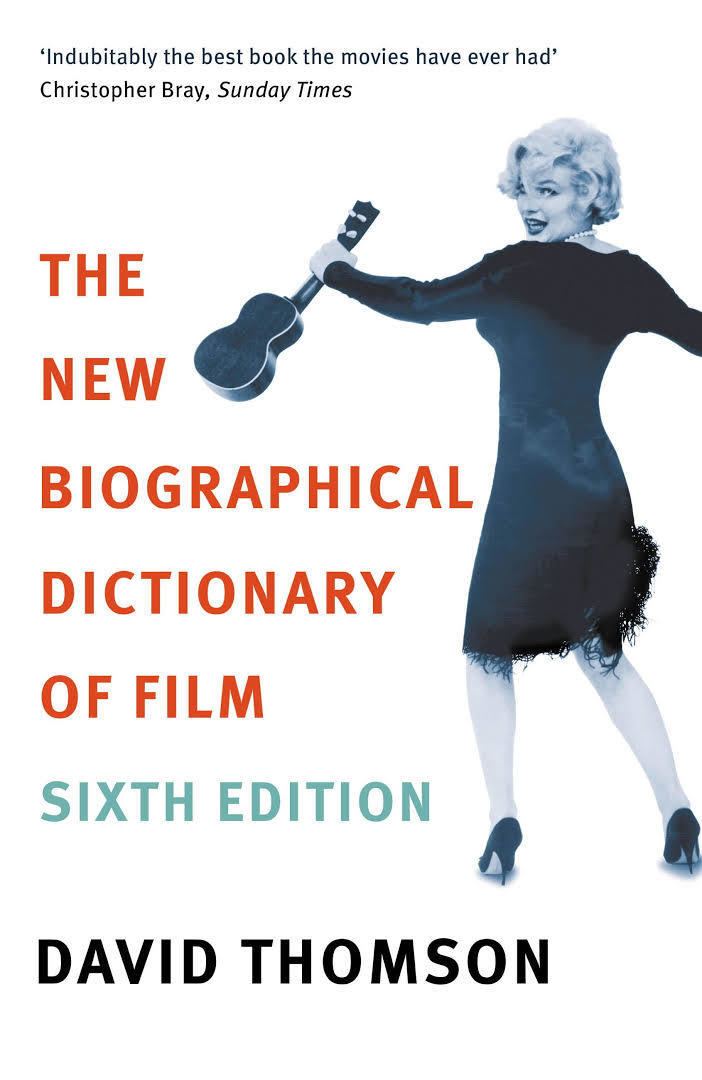8.6 /10 1 Votes8.6
4.3/5 Book Depository Publication date November 16, 2004 ISBN 0-375-70940-1 Dewey Decimal 791.4302/8/0922 22 Publisher Alfred A. Knopf | 4.2/5 Goodreads Language English Pages 1008 OCLC 57691971 Originally published 16 November 2004 Page count 1,008 Country United States of America | |||||||||||||||||||||||||||||||||
 | ||||||||||||||||||||||||||||||||||
Similar Have You Seen…?: A Personal, Moments That Made the Movies, The Whole Equation: A History of, How to Watch a Movie, The Film Encyclopedia | ||||||||||||||||||||||||||||||||||
David thomson the new biographical dictionary of film talks at google
The New Biographical Dictionary of Film is a reference book written by film critic David Thomson, originally published by Martin Secker & Warburg Ltd in 1975 under the title A Biographical Dictionary of Cinema. Organized by personality, it is an exhaustive inventory of those involved in international cinema, whether contemporary or historical, elite or esoteric. Beyond its scope, the tome is most notable for infusing subjectivity into its fact-based form; the technique may best be described as a playful deconstruction of the "reference book." It is currently available in its sixth edition, released in May 2014.
Contents
The New Biographical Dictionary of Film has garnered wide acclaim throughout the releases of its various editions; in a 2010 poll by the British Film Institute, it was voted the greatest of all books about film.
Overview
Fourth edition press notes from Random House:
Although it looks very much like a dictionary or encyclopedia, each of the book's approximately 5,000 brief biographical sketches is highly subjective: a typical entry may begin with a birthplace and filmography but always concludes with something closer to criticism and memoir as the author examines his connection to the subject's career both academically and personally.
Thomson’s entry on Tom Cruise, for example, opens by considering the actor’s age, recognizing that detractors see him as “representative of all that is most immature in American cinema today.” Thomson notes that Clark Gable was a rising star at thirty: “Now, in our collective recollection, Gable may seem older, worldlier, and more grown-up than Cruise was at thirty. But when did Gable ever risk playing the jerk to whom Cruise was totally committed in The Color of Money? When was Gable as uninhibitedly tender as Cruise managed in Risky Business? And could Gable have survived the black-hole narcissism of Dustin Hoffman in Rain Man?” The entry closes with the actor’s late-90s comeback, calling his work in Magnolia, “his most searching and self-critical performance,” and abandoning objectivity altogether: “So, after bad years, I remain hopeful, even if all the [Mission:] 'Impossibles' put a greater load on things that might be.”
History
The Martin Secker & Warburg Ltd-published first edition—the 600-page Biographical Dictionary of Cinema—was followed by Biographical Dictionary of Film, published by William Morrow & Co in June, 1980; the third, entitled A Biographical Dictionary of Film, would be released on November 17, 1994, by Andre Deutsch Ltd. 328 pages longer than the first edition, it added 200 new entries including Molly Ringwald.
The 2004 edition was a major overhaul. Although the book's first edition contained a mere 600 pages, the fourth would overflow with 1,080, updating older entries and adding 30 new personalities. The book's cover art was reworked and the word "new" was added to its title.
